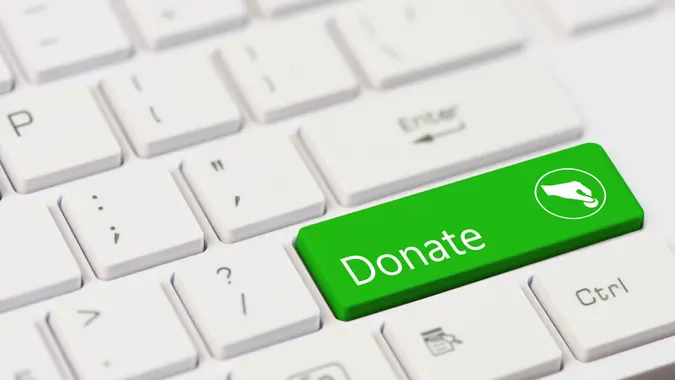6 Ways To Spring Clean Your Finances in 2025

Commitment to Our Readers
GOBankingRates' editorial team is committed to bringing you unbiased reviews and information. We use data-driven methodologies to evaluate financial products and services - our reviews and ratings are not influenced by advertisers. You can read more about our editorial guidelines and our products and services review methodology.

20 Years
Helping You Live Richer

Reviewed
by Experts

Trusted by
Millions of Readers
As you’re getting ready to refresh your home and declutter this spring, consider the season is also a good time to do some personal finance maintenance you might have put off.
Over the busy months, you possibly accumulated old, unused accounts and physical documents to get rid of. Financial spring cleaning can also include getting a better understanding of your current financial picture, money habits and progress toward goals.
To get started, consider these six ways you can spring clean your finances in 2025.
Do an Inventory of Your Finances
If you don’t already have an inventory of your financial accounts, investments and insurance coverages, consider making this your first spring cleaning task. It can be as simple as listing your balances, account numbers and other important details in a spreadsheet, app or notebook.
This step gives you a chance to see where you stand with your assets versus debts, detect potential financial problems and ensure you have enough insurance coverage. Plus, having that information recorded somewhere can be valuable in an emergency.
While you’re at it, look for any account or policy updates you need to make. For example, you might need to change account beneficiaries, close an unused bank account or increase your insurance coverage limit.
Update Your Budget
Ideally, you’ll update your budget each month to account for changed expenses or income, as Ramsey Solutions advised. Otherwise, the budget won’t reflect your current financial reality, or be as helpful for tracking your money and reaching your goals.
If you’ve put this task off or don’t have a budget yet, use a spreadsheet or budgeting app to list or update your family’s current income sources. Then, grab bank statements, credit card bills and other records that can help you account for your usual expenses accurately. Make sure the new budget balances, and watch your spending each month to align with it.
Reconsider Your Goals and Lifestyle
The Financial Health Pulse 2024 U.S. Trends Report showed that only 43% of respondents were confident about working toward reaching their long-term goals. If you’re also struggling in this area, lifestyle issues such as spending excessively or mishandling debt might be to blame.
You can look back at your financial inventory and updated budget to see what’s derailing you from saving for a house, building your retirement fund or progressing toward another goal you’ve set. You might find that it’s time to reconsider your lifestyle by downsizing, being more frugal or changing your priorities to get back on track in 2025.
Revisit Your Credit Situation
Since debt is costly and missed payments cause damage, prioritize revisiting your credit situation this spring. This includes reviewing your account balances, interest rates and payment details so you can decide on a payoff plan or spot accounts you might want to close or replace due to high interest rates or fees. It’s also a good time to enable autopay.
Plus, get your credit reports to make sure there aren’t mistakes that could hurt you when you’re trying to get a mortgage or other type of credit later. Each credit bureau has online dispute forms you can use to explain and show proof of errors you find.
Make Your Digital Money Tools More Secure
Whether it’s your online banking account, budgeting app or credit card app, security issues might be putting your information and money at risk. Take time this spring to beef up the security of your money tools with these steps the Federal Trade Commission suggested:
- Updating your financial apps
- Making your passwords more complex
- Picking security questions wisely
- Setting up multifactor authentication with facial recognition or a code sent to your phone
- Enabling security alerts about logins and suspicious transactions
Safely Toss Old Financial Documents
A more traditional spring cleaning task is tossing old paper financial documents — but be careful with the timing. Bank of America recommended keeping utility bills for one month, card and bank statements for one year and W-2 or 1099 forms for at least three to seven years. Others, like tax returns and insurance policies, are important to keep indefinitely.
Avoid merely throwing your financial documents in the trash since identity thieves could get ahold of them. Instead, use your own shredder or take documents to a community shredding event. You might also want to switch to electronic statements to avoid the clutter and risks of paper documents.
More From GOBankingRates
 Written by
Written by  Edited by
Edited by 

























